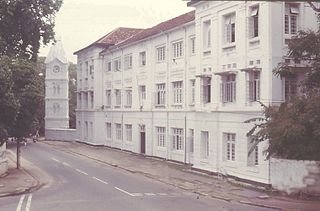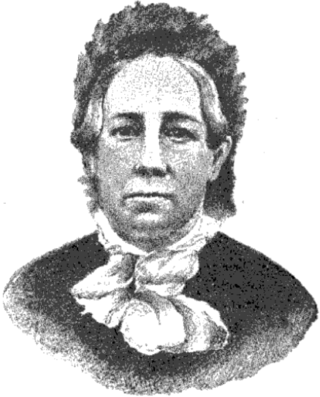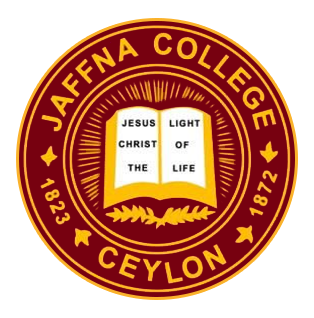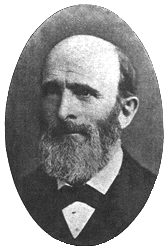
Ceylon Medical College was a public medical school in Ceylon. The college was established in 1870 as the Colombo Medical School. The college was based in Colombo. The college was merged with Ceylon University College in 1942 to form the University of Ceylon. The medical college became the university's faculty of medicine. The college was also known as Colombo Medical College.

St. John's College is a private school in Jaffna, Sri Lanka. Founded in 1823 by British Anglican missionaries, it is one of Sri Lanka's oldest schools.

Eliza Agnew was an American Presbyterian missionary who taught for over forty years in Uduvil, Ceylon. She was known as the "Mother of a Thousand Daughters" for her many alumnae, and was the first unmarried American woman missionary in Ceylon.

Jaffna Central College is a national school in Jaffna, Sri Lanka. Founded in 1816 by British Methodist missionaries, it is one of Sri Lanka's oldest schools.

The Sri Lanka Army Medical Corps (SLAMC) (Sinhala: ශ්රී ලංකා යුද හමුදා වෛද්ය බලකාය Shri Lanka Yuddha Hamuda Vayidya Balakaya) is a specialist corps in the Sri Lanka Army which specializes in military medicine and provides medical services to all army personnel and their families in war and in peace. It is made up of 4 regular units and one volunteer unit. Headquartered in Colombo, formally at army headquarters. The corps Cap badge depicting the Rod of Asclepius. General officers and senior officers of the SLMC wear gorget patches of maroon rather than of scarlet worn by other officers of similar rank.

Swami Vipulananda, also known as Vipulananda Adigal, was a Sri Lankan Tamil Hindu social reformer, literary critic, author, poet, teacher and ascetic from the Eastern Province of Sri Lanka. Vipulananda was an early pioneer associated with the Indian-based Ramakrishna Mission in Sri Lanka. Along with other reformers, Vipulananda was instrumental in the revival of the Hindu religion and native traditions in Sri Lanka after a long period of dormancy and decline during the previous 500 years of colonial rule by various European powers.

The American Ceylon Mission (ACM) to Jaffna, Sri Lanka started with the arrival in 1813 of missionaries sponsored by the American Board of Commissioners for Foreign Missions (ABCFM). Although they had originally planned to work in Galle, the British colonial office in Ceylon restricted the Americans to out-of-the-way Jaffna due to the security concerns of the British who were warring with France at the time. The critical period of the impact of the missionaries was from the 1820s to early 20th century. During this time, they engaged in original translations from English to Tamil, printing, and publishing, establishing primary, secondary and tertiary educational institutions and providing health care for residents of the Jaffna Peninsula. These activities resulted in many social changes amongst Sri Lankan Tamils that survive even today. They also led to the attainment of a lopsided literacy level among residents in the relatively small peninsula that is cited by scholars as one of the primary factors contributing to the recently ended civil war. Many notable educational and health institutions within the Jaffna Peninsula owe their origins to the missionary activists from America. Missionaries also courted controversy by publishing negative information about local religious practices and rituals.
Manipay or Maanippaai is an affluent town in the northern Jaffna District of Sri Lanka. The original name of Manipay is Periyapulam. It was a mission location when the American Ceylon Mission (ACM) came to Sri Lanka in the 19th century. Dr. Samuel Fisk Green founded the Green Memorial Hospital in 1864 in this village. It was also known as Manipai. There are number of schools in the village, some of which were founded by ACM. The 104-year-old Manipay Hindu College and the 53-year-old Manipay Hindu Ladies College, both High Schools, are prominent. The village also contains Hindu temples and churches. The Manipay Maruthady Pillaiyar Temple stands out.

Daniel Poor was an American Presbyterian missionary and educator, and the founder of the first English School in Jaffna, Sri Lanka.
Tellippalai or Thellippalai also known as Tillypalli (தில்லைப்பள்ளி) is a small town in the northern Jaffna District of Sri Lanka. It is located about 15 kilometers north of Jaffna town along the Kankesanthurai road

Jaffna College is a private school in Vaddukoddai, Sri Lanka. It was founded in 1871 as a successor to the Batticotta Seminary which had been established by American missionaries.

Samuel Fisk Green (1822–1884) was an American medical missionary. He graduated from the College of Physicians and Surgeons in New York city. He served with the American Ceylon Mission (ACM) in Jaffna, Sri Lanka during the period (1847–1873) when it was the British colony of Ceylon. During his tenure he founded the Sri Lanka's first medical hospital and school in what later became the Green Memorial Hospital in Manipay in the Jaffna peninsula. He translated and published over 4000 pages of medical literature from English to Tamil as part of his efforts to train doctors in their native language. He was personally responsible for training over 60 native doctors of whom majority had their instructions in Tamil.

Dr Samuel Chelliah Paul was a leading Ceylon Tamil surgeon.
Henry Richard Hoisington was an American Board of Commissioners for Foreign Missions missionary to Ceylon and was one of the first three missionaries who established mission station at Madura, commencing American Madura Mission in South India as an offshoot of the Jaffna Mission in Ceylon, also known as Ceylon Mission.
The Methodist Church of Sri Lanka is a Protestant Christian denomination in Sri Lanka. Its headquarters is in Colombo and was established on 29 June 1814. It is a member of the World Council of Churches, the Christian Conference of Asia, the National Christian Council of Sri Lanka and the World Methodist Council.

Velupillai Suppiah Thurairajah was a Sri Lankan Tamil architect who designed many buildings in Sri Lanka and abroad.
Nathan Ward was a physician born in Plymouth, New Hampshire who worked as a religious and medical missionary in Jaffna, Ceylon from 1833 to 1846. Ward is most remembered for his work as the head physician of the Batticotta Seminary, where he served as a prominent educator and was influential in handling the cholera outbreak of 1846.
John Gladstone Rajakulendran was a Ceylon Tamil politician and teacher.

Mary Elizabeth MacCallum Scott was a Canadian physician and Christian medical missionary who spent twenty years in Ceylon. She was the first female doctor to serve in Jaffna, Ceylon. Scott started the first nursing school in Ceylon at Manipay and her training of women nurses was considered by historians to be “revolutionary” at the time.
Mary Helen Rutnam was a Canadian doctor, gynaecologist, suffragist, and pioneer of women's rights in Sri Lanka. She became nationally recognised for her work in women's health and health education, birth control, prisoners' rights, and the temperance movement.













